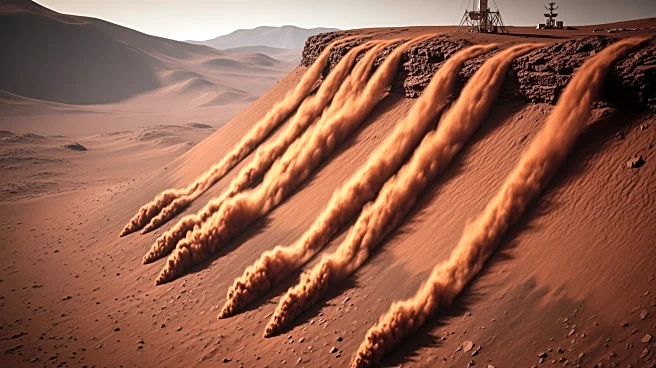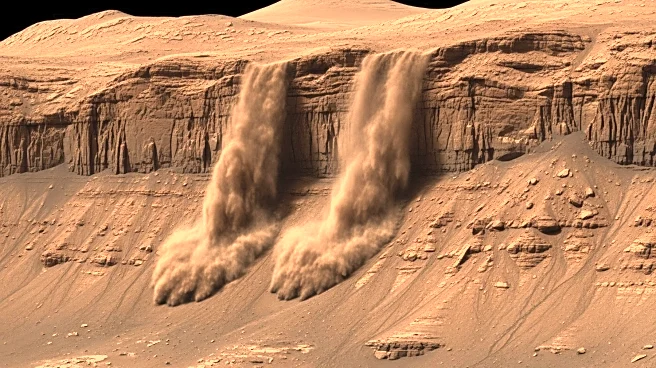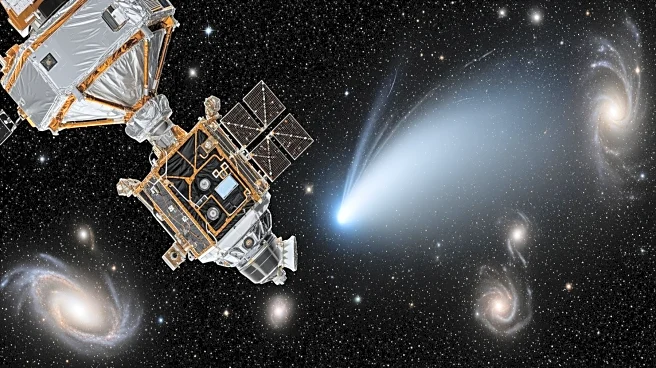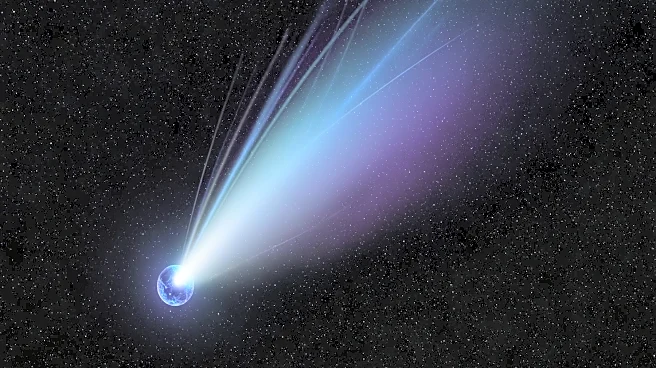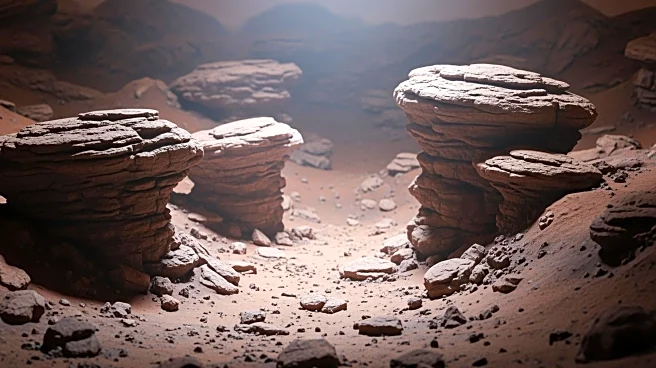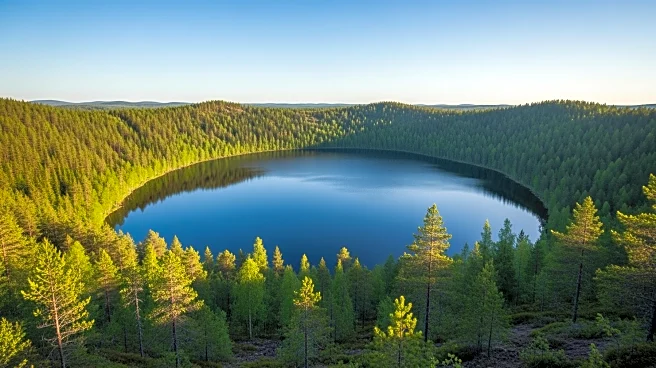What's Happening?
The European Space Agency's ExoMars Trace Gas Orbiter has captured images of dust avalanches on Mars, specifically on the slopes of Apollinaris Mons. These avalanches were triggered by a meteoroid impact,
which carved numerous new streaks on the Martian surface. The images, taken by the Colour and Stereo Surface Imaging System (CaSSIS), show impact craters and streak formations that occurred between 2013 and 2017. Scientists have determined that these streaks are primarily formed by dry processes driven by wind and dust activity, rather than water. A study published in Nature Communications highlights that meteoroid impacts are rare causes of these streaks, with seasonal changes being the predominant factor.
Why It's Important?
Understanding the formation of slope streaks on Mars is crucial for comprehending the planet's current environmental dynamics. The findings suggest that dust, wind, and sand dynamics are the main drivers of these formations, which could provide insights into Mars' climate and atmospheric conditions. This research contributes to the broader goal of understanding Mars' ancient past and its potential habitability. The ExoMars Trace Gas Orbiter's ongoing mission to map atmospheric gases and surface water-rich locations is vital for future exploration and the search for life on Mars.
What's Next?
The ExoMars Trace Gas Orbiter will continue to image Mars, aiming to provide long-term, continuous observations that reveal the planet's dynamic nature. These observations are essential for future missions and could lead to a better understanding of Mars' environmental processes. The ongoing research and data collection will support the objectives of current and future orbiters, enhancing our knowledge of Mars' history and its potential for life.
Beyond the Headlines
The study of slope streaks on Mars not only advances scientific knowledge but also raises questions about the planet's geological activity and its implications for future exploration. The use of deep learning algorithms to analyze these features demonstrates the integration of advanced technology in space research, potentially paving the way for more sophisticated methods in planetary science.
